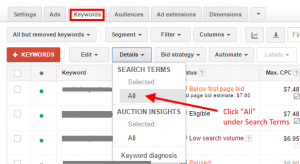Coping with the demand variation of a global economy requires the right lean warehouse management solutions. With the growth of the global supply chain, extended lead times have become a challenge as warehouses try to meet the pace of customer demand.
Lean warehouse management plays a critical role in not only controlling inventory management, but also reducing lead-time and working capital. It serves as an integral role to a company’s financial performance, and with the right systems in place, it becomes a vital link in a lean supply chain.
The scope and core of the responsibilities to maintaining a lean warehouse range from swift shipping and receiving, to accurate and flexible pick & pack, and state-of-the-art storage solutions. The first step to developing a proper strategy is to understand the challenges faced, waste produced, and areas that need improvement.
Lean Warehouse Management: The Challenges
The main challenge for warehouse management is having the right visibility on the value-adding activities carried out, and how they positively contribute to an integrated supply chain. This includes concepts like: increasing customer satisfaction while reducing costs, optimized productivity, and improved accuracy. The following are some areas to focus on when developing a lean warehouse management strategy:
- Stock Control: Improving stock control to avoid disruptions of service, decrease the loss of sales opportunities, and prevent unnecessary purchasing.
- Timing: Delivering service on time with accuracy and quality, while reducing costs.
- Information: Connecting all of the cogs in the supply chain through visible data, and a streamlined flow of information and traceability.
- Adaptability: Understanding the increasing complexity of the market and the flexibility to meet fluctuating customer demands.
Areas of Waste
In order to reduce waste, you must first identify the problem areas. Lean warehouse management and reengineering play a big role in this process. Some areas to investigate include:
- Space:This includes any area not being used to it’s utmost efficiency. Anything with low or excessive fill rates needs to be examined for redistribution.
- Inventory: There is no quicker way to freeze assets than any activity that results in excess and/or lack of products. This includes overproduction and over-processing of goods. Poor visibility and inaccurate information will greatly affect the preparation of orders and the fulfillment of P.O.’s.
- Transportation/Movement: In a recent study, AMR Research found that “Companies report their transportation costs are 5% – 7%, as a percentage of their revenue, and rising… ” This includes any internal transport or movement that is unnecessary and can be better designed. For example: storing fast moving inventory in the back of a warehouse. This type of poor planning can lead to lower productivity and added cost.
- Waiting: Any system, people, or material delays due to wasteful processes cost both time and money. Waiting for shipping approvals, or picking-line replenishments, are just some of the wasteful pitfalls people encounter. Picking activities in most warehouses generate more than 55% of the costs, so this is a big area to pay attention to.
- Defects: Activities that cause wasteful actions such as: rework, returns, or adjustments, should be considered in a lean warehouse management plan. This also includes any materials that are missing, defective, or mislabeled, causing expensive and time-consuming errors.
Solutions and Strategies
It’s important to understand all of the challenges and areas of waste, prior to designing and implementing a plan. The type of strategy you choose will have a great impact on the total supply chain output. Consider some of the following ideas to reduce lead times:
- Standardization: This can include many warehouse processes. Isolating and eliminating the cost of SKU complexity is one intelligent way to approach standardization. A more hands-on approach, would be the use of reusable dunnage and material, such as pallets and returnable containers. Some modern pallets feature nestable and collapsible designs to save you space as well. Optimizing the warehouse layout greatly reduces storing and picking times.
- Personnel: With the changing market conditions and increased customer specifications, having a flexible workforce is important. A balanced personnel ratio target will allow you to meet the fluctuation of production demands at anytime. Team members should be trained through formal programs and receive ongoing training throughout employment. Daily stand up meetings are imperative to the productivity and flow on a shift, and are an easy process to implement.
- Pull and One-Piece Flow: Enabling FIFO at a batch level is a great strategy for your pull replenishment method. This is especially prevalent in the food, fashion, and technology industries, as the products have limited shelf life. Other examples of improving on your pull and flow include:
- Increased visibility of bottlenecks
- Data sharing
- Avoiding overproduction
- Transparency of the real process lead time
- Increased quality
- Reduction of inventory levels throughout the process
- Takt Time: Using takt data to determine necessary resources is an intelligent way to plan for lean warehousing. The purpose of takt time is to precisely match production with demand; it is essentially the heartbeat of any production or warehouse system. Knowing how much personnel, product, and equipment needed per order is a science that any warehouse manager should perfect. With a strategy that considers real-time takt data, you’ll be able to greater plan for resource capacity and improve your forecasting on future orders.
- Zero Defect: Isolating key failure models and areas of defect is important for lean warehouse management. Preventative processes for error proofing are also encouraged to avoid future loses due to defects. Enabling an open culture of problem solving, rather than finger pointing, is an approach that is essential to any successful warehouse.
Lean warehouse management involves investigating and implementing best practice warehouse operations that enable companies to meet strategic delivery needs. The warehouse is responsible for facilitating the coordination of the entire supply chain, and is at the heart of any successful product. The more observation and skillful planning involved, the more successful your lean warehouse management strategy will be!
Business & Finance Articles on Business 2 Community(87)






